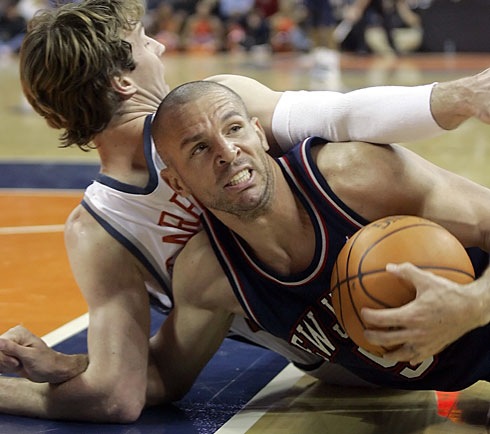 Here’s an interesting BYU study that claims to reveal a statistical recipe for victory (in the NBA at least).
Here’s an interesting BYU study that claims to reveal a statistical recipe for victory (in the NBA at least).
Some key points to highlight from it…
- At every position, the analysis showed that assists mean more to victory than field goals. This comes as validation to the philosophy of Utah Jazz head coach Jerry Sloan. Last season the Jazz led the league with 24 assists per game and reached the Western Conference finals.
- Of all the combinations of stats and positions, the study found assists by small forwards contribute the most to a team’s likelihood of victory. Conversely, turnovers by small forwards do the most harm to a team’s chances. Luke Walton of the Los Angeles Lakers is a poster child for this breed of small forward, averaging more than six assists and less than three turnovers per 48 minutes played last season.
- Teams benefit more in the point spread from an edge in offensive rebounds at the point guard spot than an equivalent edge at any other position.
Flushing out that last point… You don’t often see teams send all five players to the offensive boards. As is typical in North America, most will have one or two players – typically their guards – fall back as a safety to prevent transition baskets by the opposition. Knowing this, it’s surprising that guards are not better defensive rebounders. Or, more coaches don’t utilize their guards to pinch down and double block out on an especially good rebounding player from the other team.
IMPORTANCE OF GUARD REBOUNDING
Guards, in my mind, should be better rebounders on both ends. Unfortunately, we allow them to take sequences off when it comes to rebounding – both offensively and defensively. I encourage you to make it a point of emphasis to have your guards rebound the ball. Track it. Reward it.
In the BYU study, it points out that in 2006 Jason Kidd led the league’s point guards with 2.2 offensive rebounds per 48 minutes played. (NBA.com reports that for his career Kidd averages 6.7 rpg and 1.5 rpg on the offensive end… with his numbers spiking higher in the playoffs.)
Yes, he has a knack for being opportunistic and pursuing the ball. But, think about. Given that most guards on offense immediately transition back into their ‘safety’ role when the shot goes up, it’s really not that hard to rebound the rock.
You hear coaches all the time screaming at their players: “Get back!” … “Who’s safety?” That leaves the defensive guards who were assigned to block them out (typically) ball watching – and unaccustomed to putting a body on a player.
An opportunistic player going from offensive to defense needs to stay dangerous. As a safety, you only need to be as deep as the deepest offensive player (less so if you have more foot speed than that player). Encourage and promote in your players a mentality that allows them to experiment with offensive rebounding at the guard positions. It only takes TWO offensive rebounds per game to have a quantifiable (according to the study) impact on your W’s per season.
Again, we must develop this type of offensive-to-defensive decision-making. If you teach the ‘get back’ in to safety as an absolute, you’re setting you’re building a bad habit in your players. Basketball is not a game of absolutes.
Well, the only one I know of is high score wins!
/sef.
The study, originally posted in the Journal of Quantitative Analysis of Sports, concludes that having a team play cohesively “as a single unit” betters their chances for winning games. Novel idea, I know. (Pardon the sarcasm.)